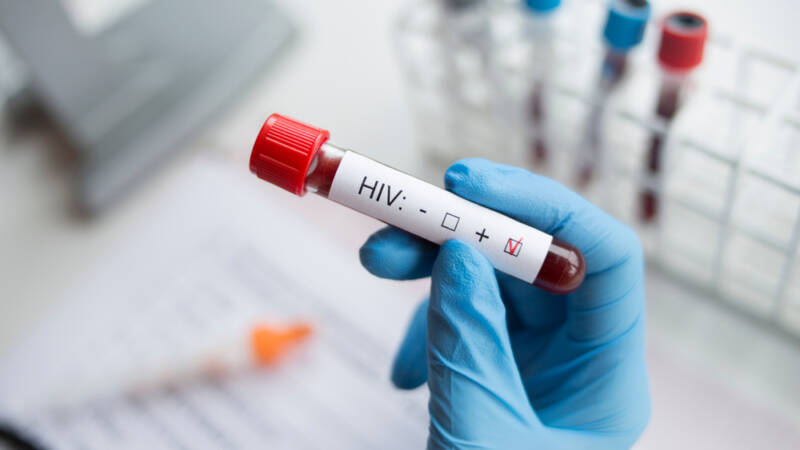Do You Know these Early Signs of HIV?

HIV (Human Immunodeficiency Virus) is a virus transmitted through bodily fluids including semen, vaginal fluids, anal mucus, breast milk, and blood. The virus attacks the body’s immune system, breaking down a person’s health defence and causing a host of symptoms depending on the stage.
Over one million people in the United States are currently living with HIV and one in seven don’t know that they have it. If left untreated, HIV can lead to AIDS (Acquired Immunodeficiency Syndrome), a chronic, life-threatening condition.
By damaging the immune system, HIV interferes with body’s ability to fight infection and disease. Since there is no cure for HIV/AIDS, treatment and medication is used to slow the progression of the disease and reduce the likelihood of it progressing to AIDS.
Early Signs and Symptoms
Symptoms are scare in the early stage of HIV, making it difficult to notice and seek treatment for. Some people exhibit flu-like symptoms during the first stage, called acute HIV infection, approximately two to six weeks after infection. These symptoms may last a few days or up to two weeks. Typical symptoms during this time include:
- Fatigue
- Red rash on the torso
- Headache
- Fever
- Sore throat
- Swollen lymph nodes
- Muscle aches
- Chills and night sweats
- Diarrhea
Many infected people make the mistake of thinking that they’re healed and heathy after symptoms disappear. However, this is simply the virus progressing to the next stage.
How HIV Progresses
The Human Immunodeficiency Virus has three stages, each with associated signs and symptoms (or lack thereof).
Stage 1: Acute HIV Infection
A highly contagious stage where people have a large amount of HIV cells in their blood. As discussed above, an infected person may experience flu-like symptoms.
Stage 2: Chronic HIV Infection (asymptomatic HIV infection or clinical latency)
HIV remains active but reproduces at low levels and symptoms are often not evident. The disease can be transmitted though and the CD4 cell count decreases. This stage can last a decade or longer.
Stage 3: Acquired Immunodeficiency Syndrome
The final stage results in a badly damaged immune system and an increasing number of severe illnesses. An AIDS diagnosis is given when a person’s CD4 cell count drops below 200 cells per cubic millimeter of blood. The survival rate is approximately three years without treatment. Common symptoms during this stage include:
- Unexplained weight loss
- Persistent fever
- Constant fatigue
- Persistent swelling of the lymph nodes in the neck, groin, and armpit
- Persistent diarrhea
- Purple, brown, pink, or red patches on the skin
- Sores on the genitals or in the mouth
- Neurological disorders, depression, and memory loss
Getting Tested
Getting tested is the only way to conclusively determine if a person has HIV. The CDC recommends that everybody between the ages of 18 and 64 get tested at least once during their lifetime and that pregnant women are tested once during every pregnancy.
If you are high-risk, you should be tested more frequently. People who fall into this category include:
- Gay or bisexual men who are or have been sexually active
- Sex workers
- Intravenous drug users
- Any person diagnosed with or treated for tuberculosis or hepatitis
These tests are fast and straightforward, so talk to your doctor if you believe you should be tested.
Treatments For HIV
There is no cure for HIV, but through proper medical care, treatment, and monitoring, many patients can live a long and healthy life without progressing to stage three. The most common treatment is antiretroviral therapy (ART) drugs – often prescribed as a “cocktail” of drugs – that stop the virus from reproducing.
Antiretroviral medications fall into six groups. It’s common to follow a regimen of three HIV medications from at least two of the following categories:
- Entry inhibitors
- Fusion inhibitors
- Nucleoside reverse transcriptase inhibitors (NRTIs)
- Non-nucleoside reverse transcriptase inhibitors (NNRTIs)
- Protease inhibitors
- Integrase strand transfer inhibitors
Alternative treatment is another choice that some HIV-positive individuals choose, often in conjunction with ARTs. These include homeopathic medicine, yoga, acupuncture, massage, meditation, and physical therapy.
Thanks to effective antiviral treatments, most people with HIV in the United States don’t develop AIDS anymore. Early diagnosis goes a long way to prevent progression, so talk to your doctor if you’re concerned or want to be tested. Doing so can help you protect your partners and live a long and healthy life.